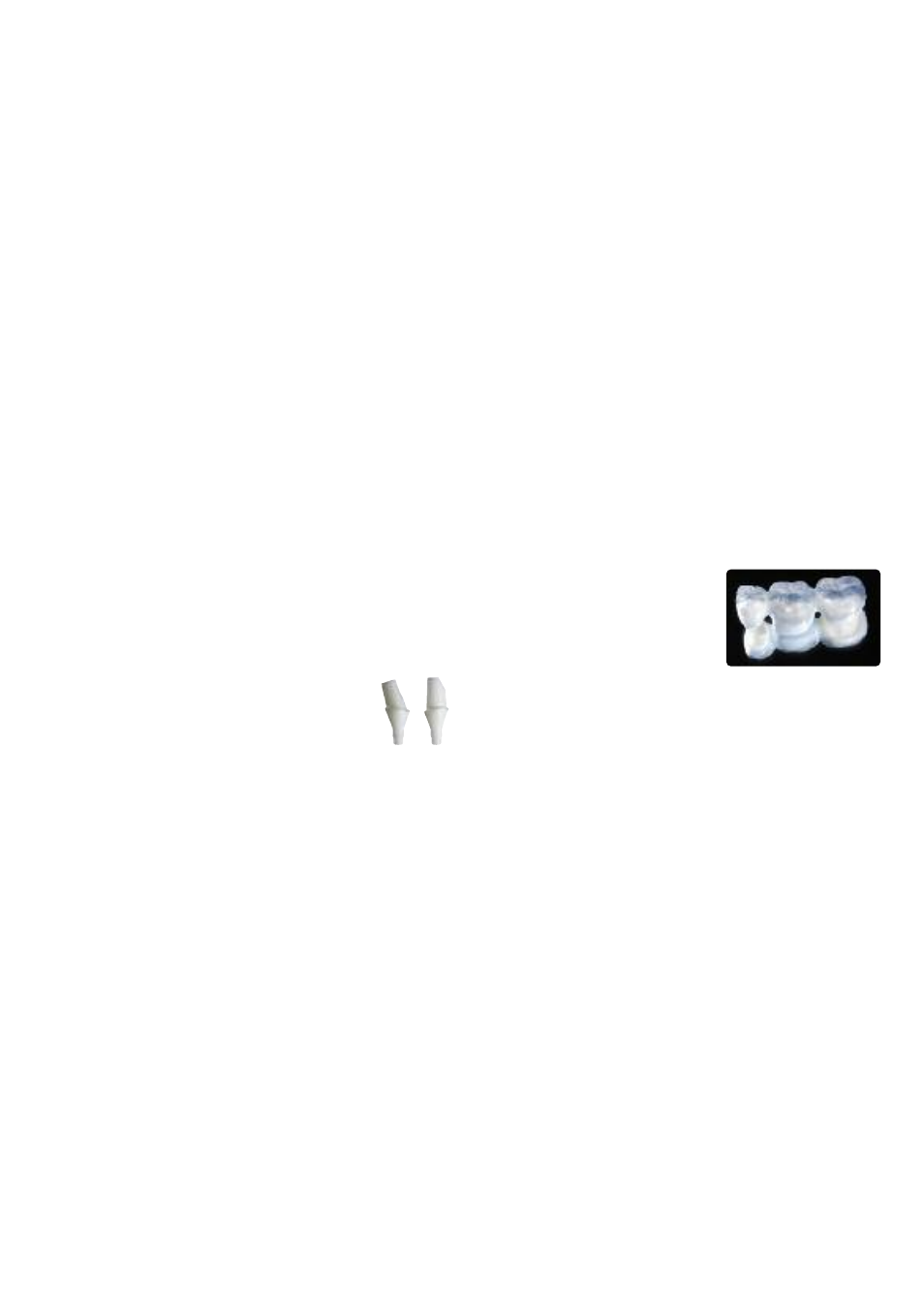E.max, Zirpress, General information | frequently asked questions – Ivoclar Vivadent IPS e.max ZirPress User Manual
Page 68: Ip s

68
e.max
®
ZirPress
General Information | Frequently Asked Questions
IP
S
Can IPS e.max ZirPress also be pressed on
other zirconium oxide frameworks?
IPS e.max ZirPress can be pressed on zirconium
oxide frameworks with a CTE in the range of
10.5–1.0 x 10
-6
K
-1
(100–500°C).
The following zirconium oxide materials were
tested:
– KaVo – Bio ZS (coloured and uncoloured) and
Bio ZH Blanks
– Nobel Biocare – Procera Zirconia
– DeguDent – Cercon Base
– 3M/Espe – Lava Frame (coloured and
uncoloured)
– DCS – DC-Zirkon
– Digident – Digizon
– Cad.esthetics – Denzir
– Vita – In-Ceram 2000 YZ Cubes (coloured and
uncoloured)
– Diatomic – Diadem/Diazir (coloured and
uncoloured)
– Wieland – Zeno Zr Disc
What are the requirements placed on zirconi-
um oxide ceramics so that IPS e.max ZirPress
may be pressed on?
IPS e.max ZirPress can be pressed on zirconium
oxide abutments with a CTE in the range of
10.5–1.0 x 10
-6
K
-1
(100–500 °C), e.g. Straumann
Anatomic IPS e.max Abutment. It must be made
sure that the abutment is not designed too small
in order to ensure adequate support of the tooth
shape and cusps (the instructions of the manu-
facturer must be observed). The layer thickness of
IPS e.max ZirPress of 0.7 –2.0 mm must be
observed.
Can IPS e.max ZirPress also be used to
fabricate single crowns without zirconium
oxide coping?
IPS e.max ZirPress has been developed for the
press-on technique. The strength of the ingots is
not sufficient for crowns without zirconium oxide
copings. Therefore, the ingots cannot be used for
this indication.
Can IPS e.max ZirPress also be pressed onto
only a part of a restoration (e.g. on a
shoulder or pontic)?
IPS e.max ZirPress can be pressed onto selected
parts of the restoration, if the specifications in the
Instructions for Use, the necessary minimum
thickness of the ceramics, and the following
points are observed. The sprues must be attached
directly, for example, to the ceramic shoulder.
During sprueing and placement on the IPS Ring
Base, adequate stability of the restoration and the
wax-up areas must be ensured. Only carefully
blast the non-pressed areas (exposed ZirLiner)
with Al
2
O
3
in order to avoid removal of the
ZirLiner. Wash firing has to be carried out, even if
ceramics are only pressed onto certain areas of
the restoration to improve wetting.
What alternative is there to a wax-up?
An IPS AcrylCAD acrylate polymer
block that fires without leaving
residue can be used instead of
modelling wax. An anatomically
shaped component is created with the
inLab
®
System (Sirona) and waxed
onto the zirconium oxide framework.
Can IPS e.max ZirPress also be used to
fabricate veneers?
IPS e.max ZirPress has been developed for
pressing onto zirconium oxide and the shades
have been adjusted for this purpose. However,
from a technical point of view, veneers can be
fabricated. For example, if veneers are required in
the anterior region for a large restorative case
and if the shade of the IPS e.max ZirPress ingot
corresponds to the demands of the patient,
veneers can be pressed (in the same investment
ring). The cut-back technique allow the veneers to
be individually characterized with IPS e.max
Ceram.
Veneers made with IPS e.max ZirPress must be
placed with the adhesive technique.